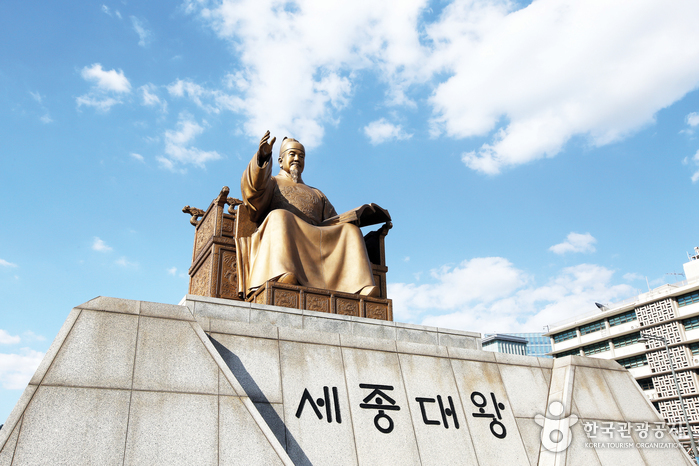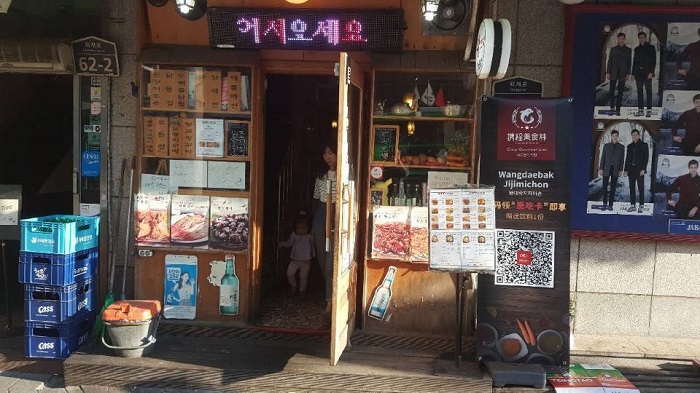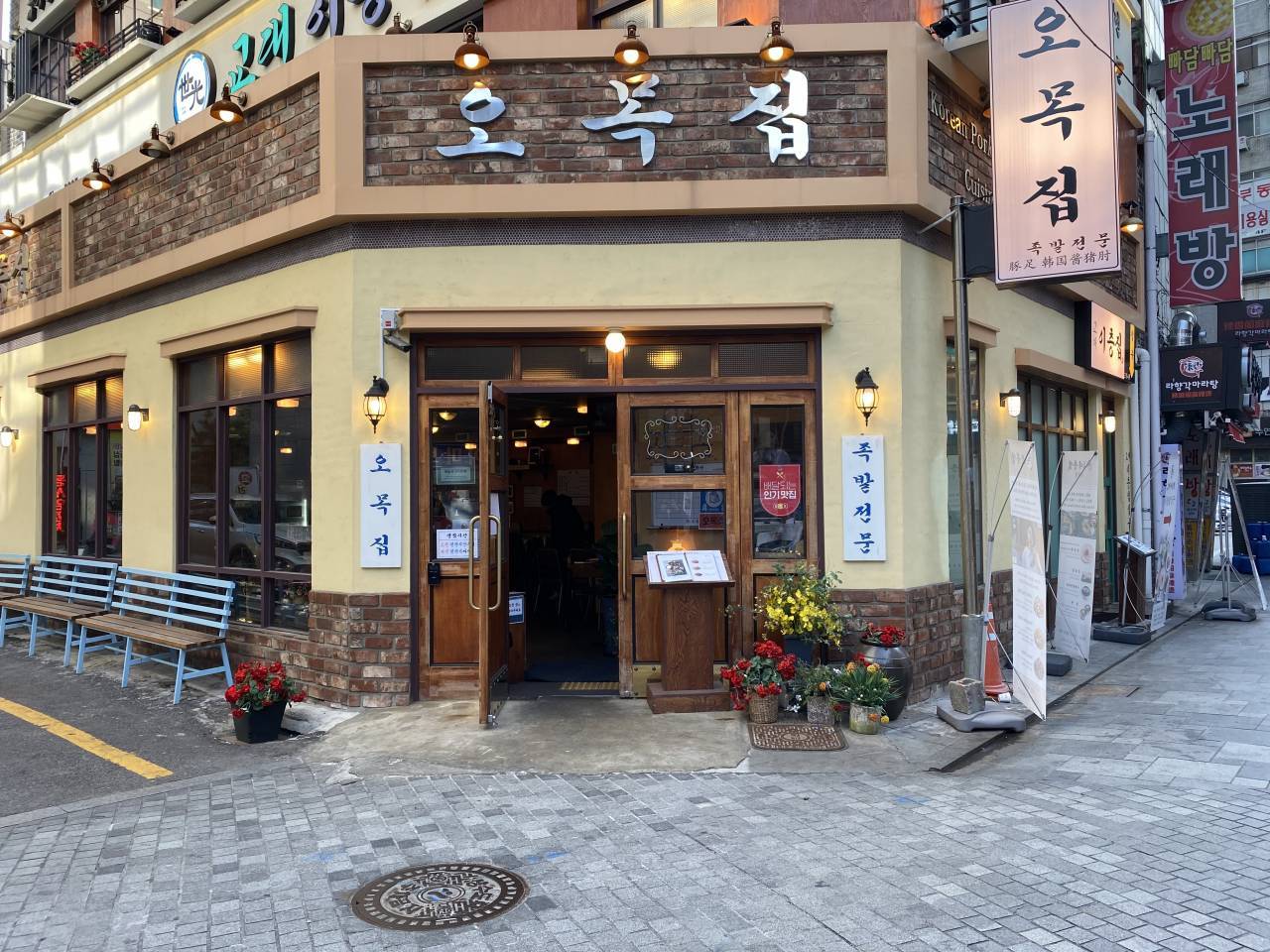King Sejong Statue (세종대왕 동상)
2.8Km 2024-03-04
175, Sejong-daero, Jongno-gu, Seoul
+82-2-2133-7713
King Sejong Statue can be found at Seoul’s Gwanghawmun Square. The statue commemorates King Sejong the Great (1397-1450, reign 1418-1450), the fourth king of Joseon (1392-1897). He is thought to be the greatest king in Korean history, for he is credited with great developments in science and technology, expansion of Joseon’s territory, and the creation of the Korean script, [Hangeul]. King Sejong’s likeness can be found on the 10,000 won bill as well.
Cancelled: Gwanghwamun International Art Festival (광화문국제아트페스티벌)
2.8Km 2022-11-14
175, Sejong-daero, Jongno-gu, Seoul
• 1330 Travel Hotline: +82-2-1330 (Korean, English, Japanese, Chinese) • For more info: +82-2-723-9484~7
Gwanghwamun International Art Festival is designed to increase public knowledge and appreciation for the arts and culture. In addition to the art exhibitions, visitors will also be able to enjoy various performances and try different kinds of arts and crafts such as ceramics, silver handicrafts, leather handicrafts, and more. The festival is also making a continuous effort to deliver more exciting programs and activities for visitors' enjoyment.
Homeplus - Dongdaemun Branch [Tax Refund Shop] (홈플러스 동대문)
2.8Km 2024-04-23
133, Cheonho-daero, Dongdaemun-gu, Seoul
-
Olive Young - Sungshin Women's University Station Branch [Tax Refund Shop] (올리브영 성신여대입구역점)
2.8Km 2024-06-27
9, Arirang-ro, Seongbuk-gu, Seoul
-
Seoul Yangnyeongsi Market (서울 약령시장)
2.8Km 2021-06-09
10, Yangnyeongjungang-ro, Dongdaemun-gu, Seoul
+82-2-969-4793
"Yangnyeongsi," which literally means medicine city district, refers to a central Oriental medicine district formed near major cities where medicinal herbs are collected and produced. Yangneongsi were first established by royal order during the Joseon dynasty for the purpose of effective production, distribution and management of medicinal products and herbs.
Seoul Yangnyeongsi Market history is relatively short, having formed naturally in the mid-1960s by medicinal herb merchants who gathered here seeking to sell their products with the city bus terminal and Cheongnyangni Station as their central base. Originally, these merchants came to Seoul through the old Seongdong Station and Chyeongnyangni Station after the Korean War, seeking to sell medicinal herbs and vegetation products that were cultivated and collected in the Gyeonggi-do and Gwangwon-do regions. This small market that was once open on an empty plot of land was later authorized as an official market establishment. Road and railroad developments between Gangwon-do and Seoul were followed and by the 1970s, the market grew into what is now seen today. The name Seoul Yangnyeongsi Market was given by the Seoul mayor in 1995.
Dal Café (달 카페)
2.8Km 2024-03-18
94-1 Samcheong-ro, Jongno-gu, Seoul
+82-2-735-7355
Dal Café is a café located in Bukchon Hanok Village, housed within a traditional Korean hanok. "Dal" means "moon" in Korean. The café is designed with lighting fixtures that give the impression of the moon hanging on the wall, making it a perfect spot for photography. The signature menu item here is the traditional Korean shaved ice with topping served in a traditional pot.
Olive Young - Donam Jungang Branch [Tax Refund Shop] (올리브영 돈암중앙점)
2.8Km 2024-06-26
1F, 118, Dongsomun-ro, Seongbuk-gu, Seoul
-
Wangdaebak Jijimichon (왕대박지지미촌)
2.8Km 2021-03-29
62-1, Toegye-ro, Jung-gu, Seoul
+82-2-752-3337
A great store to visit on a rainy day. This Korean dishes restaurant is located in Jung-gu, Seoul. The representative menu is three-colored pancake.
Dalgaebi (달개비)
2.8Km 2024-03-15
16 Sejong-daero 19-gil, Jung-gu, Seoul
+82-82-2-765-2035, 2068
Dalgaebi is a restaurant specializing in Korean table d'hote, using fresh seasonal ingredients. Its flagship menu is the teukseon sangcharim jeongsik (special set menu), which includes porridge, seasonal dishes, main courses, and desserts. The galbi sangcharim (galbi course), featuring premium Korean beef galbi grilled over charcoal and served with soybean paste jjigae, is also popular. Known for its private dining spaces and upscale ambiance, reservations can be made via phone.
Omokjip Cityhall(오목집 시청)
2.8Km 2020-10-30
38, Namdaemun-ro, 1-gil, Jung-gu, Seoul
+82-2-3789-6882
A pig's trotter(s) specialty restaurant located near City Hall Station in Seoul. This restaurant's signature menu is braised pigs'' feet. Jokbal (pig's trotter) is a representative food loved by Koreans.





 English
English
 한국어
한국어 日本語
日本語 中文(简体)
中文(简体) Deutsch
Deutsch Français
Français Español
Español Русский
Русский